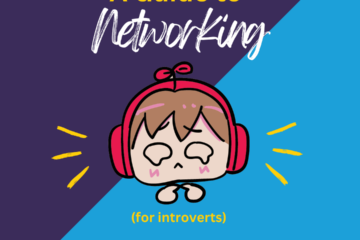In this age of constant interconnectivity—where remote work and instant messaging blur the line between work and life—many employees feel overwhelmed and stressed out at work. Whether they’re responding to their boss’s last-minute email about a time-sensitive project or expected to attend numerous work events outside of office hours, Deloitte has found that 77% of employees have experienced burnout at their current jobs. This burnout can be attributed to many factors: increased workloads, long hours, lack of control, poor communication, and feeling undervalued. While this creates a disengaging work environment, it also leads to poor performance and productivity, causing employees to leave their positions in search of a more manageable workplace. To avoid these feelings of stress, burnout, or dissatisfaction, setting boundaries at work can help establish personal limits to improve mental health and work experience.
The most simple way to set boundaries at work is to be vocal. Oftentimes, voicing concerns, especially to a person higher up on the corporate ladder, can seem intimidating. Allowing your limits to be continuously crossed, however, can result in more pain down the road, so it’s best to speak up before it gets to that point. Likely, your supervisor only encroached on those boundaries in the first place because there wasn’t clear communication on what that looked like. If you’re personally experiencing an overflux of assignments or you feel as if there’s no separation between your work and personal life, try setting up a meeting with your supervisor. Communicating to them about the problems you’re facing, while being as gracious and respectful as possible, lets them know what changes are needed to create a healthy work environment. According to Alison Green, founder of the career advice blog Ask a Manager, for a TIME article, one way to approach this conversation would be to address the bigger-picture issue, which can look something like this: “Hey, my workload is really high. Can we talk about how to prioritize? I will need to say no to new things that come up, or take some existing things away.” Another way would be to address the issue the next time your supervisor comes to you with a new assignment. In this case, responding with “I’m really interested in doing that, but my plate is full right now. I don’t think I can make room for it without compromising the work I’m doing on X, Y, and Z,” could also be effective. Overall, communication is key in setting clear boundaries at work, and it’s all a matter of speaking up and establishing them respectfully.
While communicating with your supervisor is the most effective and encouraged way to set boundaries, there are other ways you can draw lines in the workplace. For example, if you’re constantly getting messages from your team members after your shift, limiting notifications outside work hours can help create a healthier work-life balance. On applications such as Slack and Gmail, there are options to either turn off notifications or set your account on “do not disturb,” so you don’t find yourself constantly occupied with work during your downtime. Of course, in addition to limiting these notifications, make sure to communicate these changes to your team members. Doing so will inform them of your availability and help to manage their expectations.
Another way to set boundaries—or make time for yourself—is to make use of your paid time off (PTO). As the boundary between work and life gets increasingly blurred, taking a break from work could help break routines and improve mental health. Most businesses offer paid time off to their employees, both to attract good workers and to keep them satisfied in their current positions. In a recent survey conducted by Pew Research Center, however, 46% of US workers take less PTO than they are offered. Some of the reasons given include being worried that they might fall behind at work, that their co-workers would have to take on additional work, or that their chances for advancement would be affected. While some of these concerns are completely valid, taking PTO actually has major benefits for both you and your employers. In addition to significantly reducing stress and preventing burnout, PTO also increases employee productivity by as much as 80%, according to Forbes. For this reason, taking PTO, while intimidating, can help to refine those boundaries between your work and personal life, as well as improve your mental health and productivity.
These are just a few examples of how to set boundaries at work, but there are other small ways you can practice this skill. For example, declining to attend nonmandatory meetings or work outings, closing your office door, or rejecting a coworker’s request on your social media account are all ways you can draw those lines. Of course, the key to effectively establishing boundaries and keeping them uncrossed is to communicate. Letting your supervisor or team members know that changes need to be made to improve your mental health and productivity will help to address the bigger issues in the workplace, and hopefully make you a lot happier in the long run.
If you’re interested in this topic and want to learn more about setting boundaries at work, here are some additional resources:
“16 Ways to Set Boundaries at Work and Why It Matters”
“Forget ‘Quiet Quitting.’ Here’s How to Actually Set Boundaries at Work”
“Your Guide to Drawing the Line and Setting Boundaries that Work”
“How to Set Boundaries at Work When It’s Hard (Especially When Remote)”
“6 Ways to Set Boundaries at Work—Even When It’s Uncomfortable”


